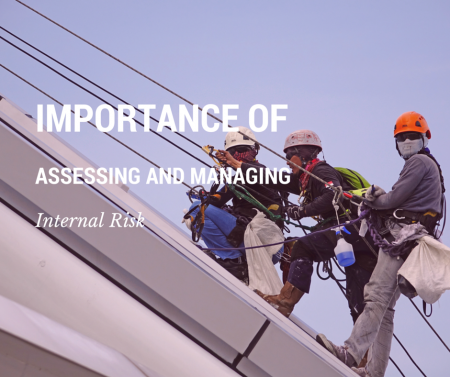
Managing internal risk and the benefits of business continuity management
With more publicity and the resulting emphasis being placed onto external risks such as data breaches, risks arising from internal factors are dangerously being overlooked. In this article, we will explore the importance of assessing and managing internal risk for businesses as well as the benefits of Business Continuity Management.
According to claims data from AIG Asia Pacific Insurance Pte Ltd (AIG SG), the top three risks for SMEs are[1]:
- Workplace injuries
- Fire/water damage to property
- Legal liability
Workplace injuries are becoming increasingly common with claims accounting for over half of AIG SG claims in 2015[2]. This drastically impacts business operation as workers will not be able to work at full capacity during their recovery period or in more severe cases completely unable to work. Workplace injuries also bring about work injury compensation claims under the Work Injury Compensation Act (WICA) or even civil suits regarding employer negligence. Productivity is additionally adversely affected through lower employee morale and management distractions from more urgent matters. This can be better managed by adopting Occupational Health and Safety as a key objective of the business and implementing systematic and proper safety procedures, education and training for all employees.
Fire/water damage to property can be devastating as proven by a recent incident involving popular shopping mall Parkway Parade having to entirely shut down for four days due to a fire in May 2016. It can lead to substantial tangible (repair bills, loss of potential sales) and intangible (damage to reputation) costs for a business. This is where Business Continuity Management (BCM) comes in.
At its core, BCM involves pre-empting and identifying potential threats to a business and developing reliable support plans and infrastructure which enables the business to continue functioning during the crises or disaster. The BCM will include having back-up support facilities, people and systems that can be quickly activated during times of need[3].
Businesses can ensure that their BCM plans are reliable and of high standard by adopting enterprise resilient standards (ERS) such as ISO 22301 Societal Security – Business Continuity Management Systems and ISO 28000 Certification on Security Management Systems for Supply Chain[4]. These standards help to ensure that everything is conducted in an orderly and systematic manner. Additionally, they are audited and reviewed annually by third-party experts[5]. By meeting these standards businesses will enhance their reputation and be classified as a reliable supplier by their customers which is crucial for a robust business relationship.
As highlighted by AIG SG’s Head of SME Packages, Krishna Moorthi Sri Ramalu, “SME owners often do not invest in risk management and contingency planning as they are preoccupied with the day-to-day running of their companies. However, it is precisely because of their smaller scale that SMEs can ill-afford hefty losses caused by business interruptions or closures, loss of income, supply chain delays or damage to neighbouring properties[6].”
Here at InvoiceInterchange, we work with businesses to optimise working capital by providing a flexible, fast and reliable platform for them to obtain cash by auctioning their unpaid invoices. This therefore enables them to devote more resources towards managing the disruptive risks to their business, whose importance has been covered above.
InvoiceInterchange can also act as a medium to obtain fast cash in the event of a BCM situation.
In our next article, we will explore an external risk: automation resulting from technological progress and how it might impact your business.
References
[1] Williams, A. (2016, June 29). SMEs’ biggest insurance risk? Workplace injury claims, says AIG Singapore. Retrieved July 04, 2016, from http://www.straitstimes.com/business/companies-markets/smes-biggest-insurance-risk-workplace-injury-claims-says-aig-singapore
[2] Ibid.
[3] Lee, X. E. (2016, June 29). Knowing what to do when disaster strikes. Retrieved July 04, 2016, from http://www.straitstimes.com/business/knowing-what-to-do-when-disaster-strikes
[4] BCM-Certified. (n.d.). Retrieved July 04, 2016, from http://www.bcm.org.sg/BCM-Certified
[5] Lee, op. cit.
[6] Williams, op. cit.
Related Articles

How Invoice Finance Facilities Can Grow With Your Business

The Working Capital Challenge: How Long Credit Terms Could Be Holding Your Business Back
